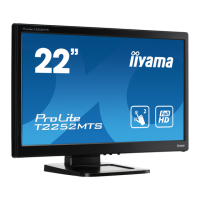
Do you have a question about the Iiyama ProLite T2252MTS and is the answer not in the manual?
| Screen Size | 22 inches |
|---|---|
| Resolution | 1920 x 1080 |
| Brightness | 250 cd/m² |
| Response Time | 5 ms |
| Contrast Ratio | 1000:1 |
| Number of Touch Points | 10 |
| Connectivity | HDMI, VGA, USB |
| HDMI Ports Quantity | 1 |
| VGA (D-Sub) Ports Quantity | 1 |
| USB Ports Quantity | 2 |
| Built-in Speaker(s) | Yes |
| Built-in Camera | No |
| HD Type | Full HD |
| Display Technology | LCD |
| Aspect Ratio | 16:9 |
| VESA Mounting | 100 x 100 mm |
| Weight | 5.5 kg |
| Viewing Angles | 178° horizontal, 178° vertical |
| Touch Technology | Capacitive |
Information on how to report faults, contact support, and find help online.
Steps to check before contacting customer support to resolve common issues.
Required information and evidence needed when reporting screen defects.
Statement of compliance with relevant EC/EU directives for the LCD monitor.
Recommendations for product recycling and ENERGY STAR compliance.
Essential warnings about electrical hazards, cabinet tampering, and object insertion.
Guidelines for safe installation on flat surfaces, near water, power, and in adverse weather.
Cautions regarding installation location, ventilation, moving, unplugging, and continuous use.
Advice for comfortable viewing and preventing eye fatigue during prolonged use.
Describes normal LCD phenomena like flicker, afterimage, and uneven brightness.
Procedure for returning the unit for service or obtaining replacement packaging.
Guidelines for safely cleaning the monitor's cabinet and LCD screen.
Highlights key features and capabilities of the LCD monitor.
Ensuring all included accessories are present in the package.
Diagrams and identification of buttons and ports on the monitor.
Detailed list of all connectors and their respective functions.
Instructions for physically connecting the monitor to a computer and power.
Important considerations for signal cables and a visual connection example.
Guidance on setting the correct signal timing for computer compatibility.
Instructions on how to tilt the monitor for optimal viewing comfort.
How to access and navigate the monitor's On-Screen Display menu.
Automatic adjustment for image position, clock, and phase.
Adjusting screen contrast, brightness, and power saving ECO mode.
How to select the active input source (VGA, DVI, HDMI, Auto).
Controls for volume, mute, and selecting audio input sources.
Options for adjusting color temperature and preset color modes.
Viewing current input signal information, resolution, and model number.
Manual adjustment of clock, horizontal/vertical position, and phase.
Adjusting picture sharpness and selecting video display modes.
Configuring OSD language, position, timeout, and background.
Controlling the power indicator LED and restoring factory presets.
Activating and deactivating the OSD menu lock feature.
Activating and deactivating the power switch lock feature.
Procedure for optimal image adjustment using an analog input and test pattern.
Adjusting vertical position, horizontal position, and clock for image alignment.
Fine-tuning phase, brightness, and color settings for optimal picture quality.
Details on ENERGY STAR and VESA DPMS compliance for power saving.
Explanation of how the monitor enters and exits power saving mode.
Initial steps to take when the monitor fails to operate correctly.
Solutions for issues like no picture, synchronization, or incorrect display.
Troubleshooting steps for problems related to sound output and volume.
Information and website for proper recycling of the monitor.
Detailed technical data including display, resolution, and connectivity.
Operating conditions, storage requirements, and product certifications.
Visual representation of the monitor's physical size and measurements.
Table listing supported video resolutions and corresponding timing parameters.
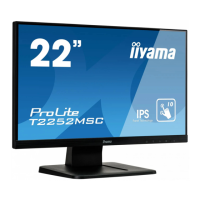
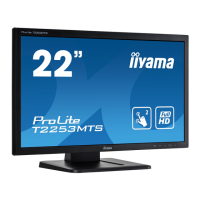

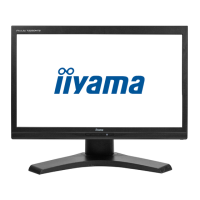
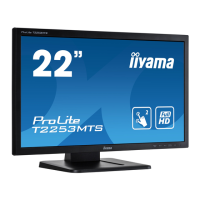

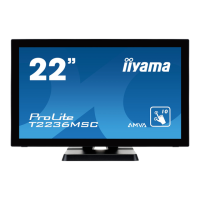
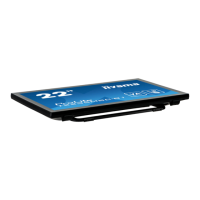

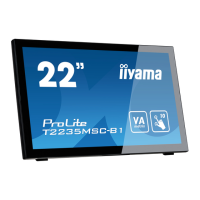
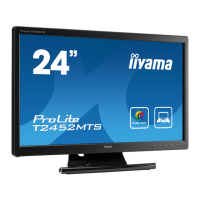

